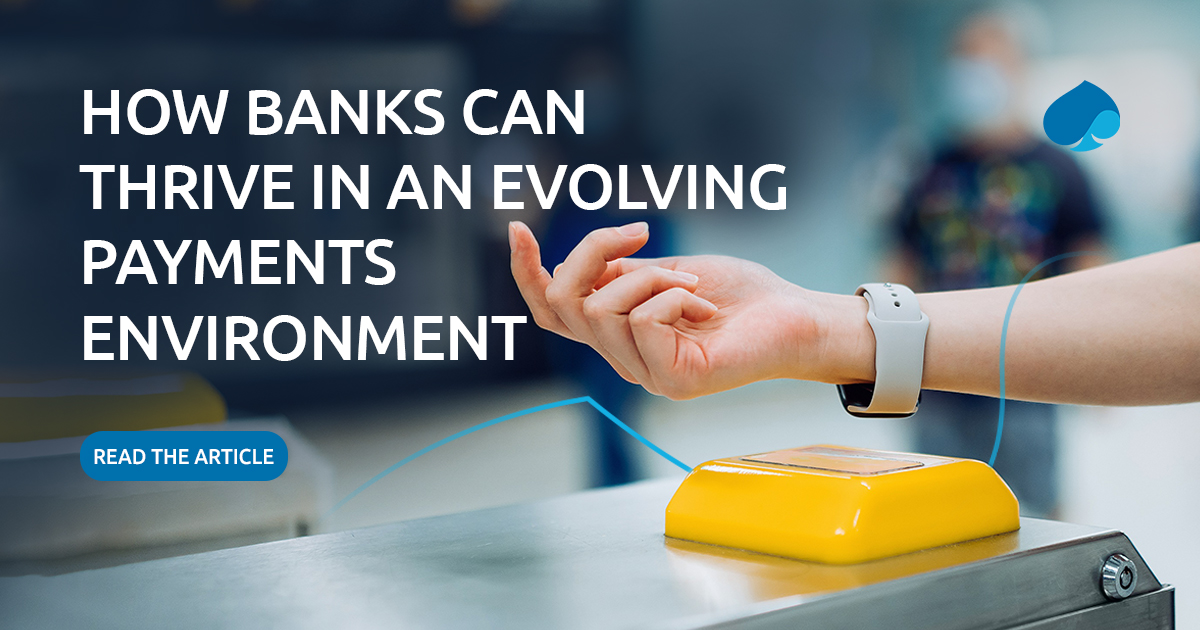
Collaborating to boost top-line revenues and slash expenses today can help fund game-changing innovations to drive success tomorrow
In brief:
- Banks must innovate to meet rising customer expectations and compete with FinTech and Big Tech firms in the fast-moving payments space.
- Rising regulatory and standardization costs are consuming greater shares of IT budgets, limiting banks’ ability to invest in innovative technologies and business models.
- Banks that work with peers and partners to help enhance profitability can fund the innovations needed to stay relevant and drive long-term success.
The payments arena is evolving rapidly, and banks are struggling to keep pace. Nimble FinTech and Big Tech competitors are stealing customer and merchant relationships with personalized, data-driven experiences and digital-first business models that embed payments into ecosystem journeys.
For incumbent banks, keeping pace with advances in areas like P2P payments, digital wallets or embedded finance has become a strategic imperative. In the not-too-distant future, innovations such as central bank digital currencies (CBDCs) promise to revolutionize the space and create potential growth opportunities for banks with the right value propositions.
Many established players recognize they must scale up to compete, but they are constrained by bandwidth and funding concerns. They also face pressure to shore up profitability in the face of intense competition and rising regulatory and standardization costs. How to balance these demands and build a relevant, sustainable business?
We have found it’s best to approach the challenge comprehensively and collaboratively. To marshal the needed resources, banks can use open banking models and new products to grow top-line revenues, while embracing payments networks and other shared infrastructures to reduce regulatory and compliance costs.
The end game is to use those profits to invest in innovative technologies and capabilities that will define future success. This remains banks’ game to lose but they must move with urgency to adapt strategies, business models, and technologies for the emerging payments environment.
A rapidly evolving playing field
The global payments industry is huge and growing, expected to generate more than $3 trillion by 2026. In theory, no one stands to benefit more than banks. Payments account for about 40% of global banking revenues while facilitating transactions is central to customer acquisition and retention efforts.
Even so, banks face daunting challenges. Regulatory and standardization costs are consuming greater shares of their IT budgets, leaving less money for innovation, even as FinTech rivals, unencumbered by legacy systems, constantly push the envelope on innovation. For example, PayTech firm Stripe is leveraging OpenAI’s ChatGPT-4 to answer natural-language queries, speeding the development process for clients.
These are the terms of the competition and banks that can’t keep up can suffer. In a recent Capgemini survey, 74% of executives reported that their IT budgets prioritize maintaining legacy systems over innovation. Small wonder that 40% said their payments businesses were slightly too highly unprofitable while just 32% reported moderate or high profitability.
A Roadmap for payments transformation
Banks bring some inherent advantages to this competition, including strong balance sheets, customer data, and regulatory expertise, but the key to success often lies in embracing new technologies and business models like FinTech firms.
Here are three key areas that banks can activate to jumpstart innovation and stay relevant in the years ahead:
Modernize your payments platform to grow top-line revenues
The payments market today is defined by experience. Customers expect payments to be embedded, invisible, and connected—something we call Payments 4.X. They want providers to facilitate transactions seamlessly along their ecosystem journeys, and expect the latest value-added products, such as real-time payments or buy-now-pay-later (BNPL) offers.
For revenue-hungry banks, these products can represent more than just sales. For example, institutions with the right real-time payment capabilities can generate real-time data analytics to improve customer engagement and improve personalization.
Many banks we talk to already have a vision of where they want to go and how they might get there. In our survey, 55% of bankers ranked modernizing payments platforms to accommodate real-time payments, API integration, and the cloud as innovation priorities.
Significantly, about 52% were considering leveraging third-party products and offerings, while 45% planned to use API-based ecosystems and platform-based business models to stay relevant.
Providing frictionless, personalized payment experiences has become a pathway to growing customer loyalty, wallet share, and top-line revenues.
Collaborate to redefine standards and reduce costs
Harmonizing payments through regional payments networks or shared infrastructures can drive efficiency as new regulatory and standardization initiatives, such as PSD2 and ISO 20022, come online.
One example is the Euro Banking Association (EBA), a regional forum that—in conjunction with EBA Clearing, a processor owned by 48 banks—has helped harmonize cross-border standards to help make payments faster and less costly.
In concert with other regional agencies, the EBA has created the technology and operational resource building blocks—including pan-European retail payments clearing house and an instant payments network—to help banks create differentiated payment offerings at lower costs.
Banks in other parts of the world are pursuing similar initiatives. As ironic as it sounds, incumbent providers that participate can enhance their competitiveness by collaborating with rivals.
Innovate to build a sustainable future
The ultimate objective is to transform additional profits into long-term innovation and sustainable business models. Digital ledger technologies—and CBDCs specifically—are among the next wave of innovation that demands proactive responses from incumbents.
Already, 114 central banks are exploring CBDCs, while 11 have fully launched their own digital currencies. We believe it signals the beginning of a new paradigm for banks, one that can lay a foundation for a new era of product innovation and improved customer experiences.
CBDCs promise to lower transaction costs while boosting financial inclusion, security, and payment speed. The ability to facilitate real-time, cross-border P2P payments is among the most promising retail applications.
On the wholesale level, CBDCs could allow banks to distribute trade finance products to larger customer bases that are linked by trade or supply chain ecosystems. They also could help banks create value in areas like cross-border treasury management or global custody.
In our survey, 62% of respondents said distributed ledger technologies such as CBDCs could unlock new value sources. The time to begin developing and embracing the technologies and business models that will power these promising applications is now.
Considerations moving forward
To remain competitive going forward, many incumbent players will need to overhaul their technology systems, organizational structures, and business models. Key questions to help guide that journey include:
Business strategy:
Where do your institution’s greatest opportunities lie to boost short-term profitability? How can you build a business case for funding new initiatives? How willing is your bank to collaborate with peers?
Operating model:
What’s your ideal level of manual processes vs. automation? What is your target balance of centralized vs. decentralized operations? Do you have the talent and management buy-in to pursue innovation?
Technology and data:
Do you presently have AI/ML technologies and centralized data capabilities to generate actionable insights? What is your current breakdown of cloud, API, and AI adoption? Where does innovation lie on management’s priority list? How much technology debt are you carrying?
Conclusion
Innovation is the lifeblood of payments and the key to long-term success. Banks that collaborate to boost profitability can keep pace and stay relevant in an increasingly crowded marketplace.




